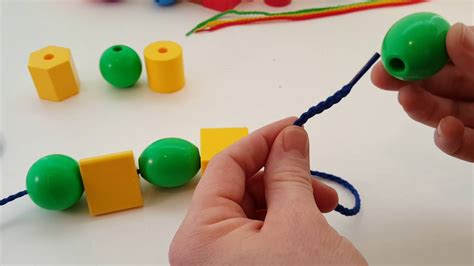Do you ever wonder how you are able to see a cup of coffee, reach out for it, and effortlessly lift it to your lips without spilling a single drop? This seemingly simple action is a complex process that requires coordination between your visual and motor systems.

Definition of Visual Motor Integration
Visual motor integration (VMI) is the ability to process visual information and use it to guide motor actions. It involves the coordinated effort of several brain regions, including the occipital lobes (responsible for processing visual information), the parietal lobes (responsible for spatial awareness and attention), and the cerebellum (responsible for coordinating movement).
Importance of Visual Motor Integration
VMI is essential for a wide range of everyday tasks:
- Daily Activities: Writing, drawing, eating, dressing, using tools, and playing sports
- Educational Activities: Reading, writing, and solving math problems
- Occupational Activities: Operating machinery, assembling products, and performing intricate tasks
Common Signs of Visual Motor Integration Problems
Children and adults with VMI problems may experience difficulties with:
- Eye-hand coordination: Poor handwriting, difficulty catching balls, or bumping into objects
- Spatial awareness: Difficulty navigating unfamiliar environments, losing track of objects, or having trouble judging distances
- Perceptual skills: Difficulty recognizing shapes, letters, or numbers
- Motor planning: Difficulty sequencing movements, such as buttoning a shirt or following a recipe
Causes of Visual Motor Integration Problems
VMI problems can be caused by various factors, including:
- Neurological disorders (e.g., cerebral palsy, autism spectrum disorder)
- Developmental delays
- Eye coordination problems (e.g., strabismus, amblyopia)
- Sensory processing disorders
- Head injuries or strokes
How to Improve Visual Motor Integration
There are several ways to improve VMI:
- Occupational therapy: Exercises that focus on eye-hand coordination, spatial awareness, and motor planning
- Vision therapy: Exercises that strengthen eye muscles and improve eye coordination
- Sensory integration therapy: Activities that promote the integration of sensory information, including visual and motor input
- Computer-based exercises: Interactive games and apps that target VMI skills
Benefits of Improving Visual Motor Integration
Improving VMI can lead to numerous benefits:
- Enhanced academic performance: Improved handwriting, reading comprehension, and math skills
- Increased independence: Improved ability to perform daily tasks, such as dressing and eating
- Improved social skills: Better hand-eye coordination and spatial awareness for sports and other social interactions
- Reduced risk of accidents: Improved eye-hand coordination and spatial awareness for navigating and performing tasks safely
Applications of Visual Motor Integration
Beyond its importance in everyday life, VMI is also crucial for various applications:
- Robotics: Developing robots with improved hand-eye coordination and spatial awareness
- Virtual reality: Creating immersive experiences that require precise visual motor control
- Ergonomics: Designing workspaces and products that support optimal VMI
- Sports performance: Enhancing eye-hand coordination, spatial awareness, and motor planning for improved athletic performance
Tips and Tricks for Improving Visual Motor Integration
- Use visual cues: Break down tasks into smaller steps and use visual aids, such as pictures or diagrams.
- Practice eye exercises: Engage in activities that improve eye tracking, focusing, and coordination.
- Encourage imaginative play: Activities that involve pretending, building, or creating can enhance VMI skills.
- Provide sensory input: Incorporate activities that stimulate the visual, auditory, and tactile senses.
- Seek professional help: If difficulties persist, consult an occupational therapist or other specialist for evaluation and guidance.
Common Mistakes to Avoid
- Ignoring underlying causes: Failure to address underlying issues, such as neurological disorders or sensory processing challenges, can hinder improvement.
- Not practicing regularly: VMI skills require consistent practice and reinforcement.
- Focusing on isolated exercises: Incorporate activities that integrate visual and motor components in a meaningful way.
- Overlooking the importance of rest: Breaks and rest periods are essential for consolidation and retention of skills.
- Comparing to others: Every individual progresses at their own pace. Focus on the unique needs and abilities of the person.
FAQs on Visual Motor Integration
1. How common are visual motor integration problems?
According to the American Occupational Therapy Association, VMI problems affect approximately 5-10% of children.
2. Can visual motor integration improve over time?
Yes, VMI can improve with appropriate intervention and practice, especially during childhood when the brain is more receptive to learning.
3. What is the relationship between vision and VMI?
Vision provides the visual information that guides motor actions, but VMI also involves the integration of other sensory inputs, such as touch and proprioception.
4. Can adults also experience visual motor integration problems?
Yes, adults can develop VMI problems due to brain injuries, strokes, or other neurological conditions.
5. How can I tell if my child has visual motor integration problems?
Look for signs such as difficulties with eye-hand coordination, fine motor skills, and spatial awareness. Consult with a healthcare professional if you have concerns.
6. Are there any medications that can improve visual motor integration?
Medications are not typically used to treat VMI problems, except in cases where underlying neurological disorders are present.
7. Can technology help improve visual motor integration?
Yes, computer-based exercises and games can provide targeted practice and feedback for VMI skills.
8. What are some creative ideas for improving visual motor integration?
* Art activities: Drawing, painting, and sculpting encourage eye-hand coordination and spatial reasoning.
* Interactive puzzles: Tangrams, jigsaw puzzles, and logic games promote problem-solving and spatial skills.
* Construction games: Building with blocks, LEGOs, or other materials enhances eye-hand coordination and spatial awareness.
* Sports and games: Activities such as catching, throwing, and playing board games involve visual motor integration.
* Nature exploration: Exploring natural environments encourages visual scanning, spatial orientation, and coordination.
